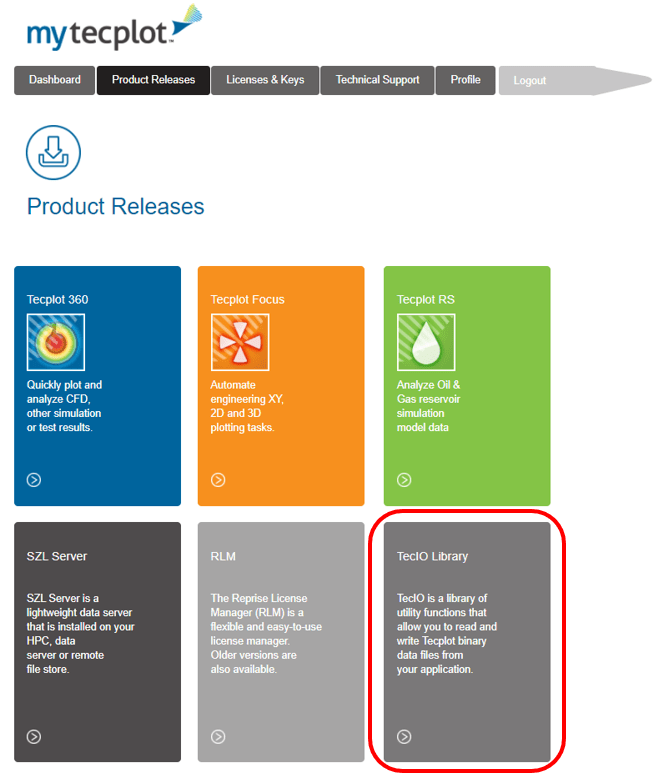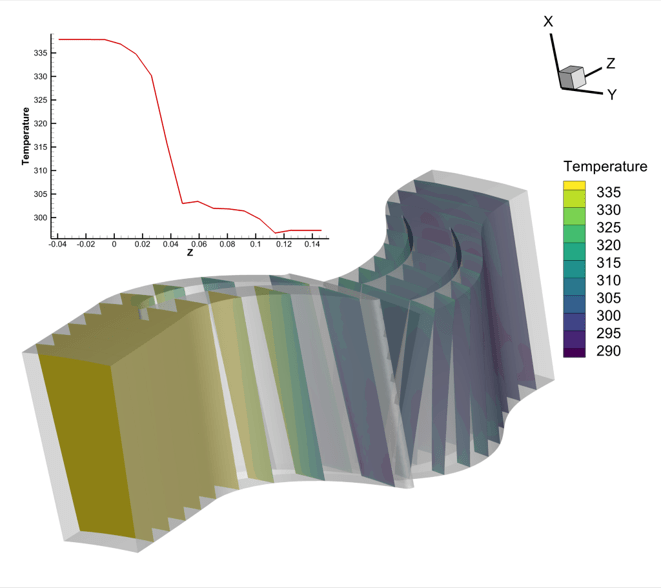TecIO: What It Is and When to Use It
Agenda
- What is TecIO and why should I use it?
- How do I get TecIO. Is it free?
- Do I need to compile TecIO?
- Which format should I use – PLT or SZL?
- Example code walkthrough – old and new APIs
- TecIO In-Situ research

TecIO source code is available in our customer portal, MyTecplot.
What is TecIO and why should I use it?
What is TecIO?
- TecIO Library reads *.szplt file format and writes Tecplot binary *.plt and *.szplt file formats.
- Provides a consistent API to protect you from internal format changes.
- Available in C & Fortran.
- Can be used via Python.
- Can be used via MATLAB.
Who should use TecIO?
- Anyone who wants a fast reliable way to store data in Tecplot file format.
- CFD code developers.
- PIV users & hardware suppliers.
- Users of SU2 (source code included in the SU2 repository).
- Users of FUN3D (requires downloading TecIO from MyTecplot).
See the blog post, Tecplot SZL File Output from FUN3D.
How do I get TecIO? Is it free?
Precompiled libraries are included in the Tecplot 360 installation. Source code is available in our customer portal MyTecplot.
Do I need to compile TecIO?
- If you are using MPI on Linux/Mac you’ll almost certainly need compile TecIO.
- If you need a static library (shared libraries are included in the Tecplot 360 install), you’ll need to compile TecIO.
- For build instructions see ‘readme.txt’ in the source distribution.
Which format should I use – PLT or SZL?
SZL File Format
- TecIO-MPI can only write SZL files.
- You can use SZL server.
- SZL loads into Tecplot 360 faster.
- Smaller files when using unstructured grids.
- Can use TecIO to read.
- Can use TecIO-Insitu (research).
PLT
- Polyhedral zone type.
- Published format (can write your own reader/writer).
Where can I find documentation and example code?
- Chapter 3: Binary Data
- Chapter 5: Reading SZL Data Files
- Chapter 6: Writing SZL Data Files
Example Code
- In the Tecplot 360 installation
<install dir>/utils/tecio/examples - In the TecIO source distribution in the ‘examples’ directory
Example Code Walkthrough – Old and New APIs
Old API (TECINI, TECZNE, TECDAT, etc.)
- Supports PLT & SZL file formats
- Data types defined for the entire file (limited to single and double precision)
- Long parameter lists
- Difficult to support writing to multiple files simultaneously
New API (tecFileWriterOpen, tecZoneCreateFE, etc.)
- Supports SZL files only (no-polyhedral cell type support)
- Data types may be specified per variable (and allows integer types)
- Shorter parameter lists
- Uses file handles to more easily support writing to multiple files
IJ-Ordered Zone – Old API
ij_ordered.cpp
res = TECINI142("IJ Ordered Zone", "X Y P", "outfile.plt", ".", &FileFormat, &FileType, &Debug, &IsDouble);
res = TECZNE142("Ordered Zone", &ZoneType, &IMax, &JMax, &KMax, 0, 0, 0, &SolutionTime, &StrandID, 0, &IsBlock, 0, 0, 0, 0, 0, NULL, NULL, NULL, 0);
// Create X, Y, P array data...
III = IMax*JMax
res = TECDAT142(III,X,0);
res = TECDAT142(III,Y,0);
res = TECDAT142(III,P,0);
res = TECEND142();
IJ-Ordered Zone – New API
ijkmany.cpp
void* fileHandle = NULL;
res = tecFileWriterOpen("outfile.szplt", "IJ Ordered Dataset", "X,Y,P", fileFormat, fileType, defaultDataType, NULL, fileHandle);
// Create a IJ-Ordered Zone
int32_t zoneHandle;
int varTypes[3] = {1,1,2}; // single, single, double
res = tecZoneCreateIJK(fileHandle, "IJ Ordered Zone", IMax, JMax, KMax, &varTypes[0], NULL, NULL, NULL, 0, 0, 0, &zoneHandle);
// Create X, Y, P array data...
int64_t numPoints = IMax*JMax;
res = tecZoneVarWriteFloatValues(fileHandle, zoneHandle, xVarNum, 0, numPoints , X);
res = tecZoneVarWriteFloatValues(fileHandle, zoneHandle, yVarNum, 0, numPoints , Y);
res = tecZoneVarWriteDoubleValues(fileHandle, zoneHandle, pVarNum, 0, numPoints , P);
res = tecFileWriterClose(&fileHandle);
TecIO In-Situ Research
Research TecIO code has the ability to export SZL files with only the volume cells that meet a specific criteria (e.g. Temperature < 2100 and Temperature > 1900). This can result in 93% reduction in file size with no “post-processing” on the solver side.
See the attached white papers for details:
- A Subzone-Based In-Situ Technique for I/O Efficient Analysis and Exploratory Visualization
- In-Situ Visualization of 10-Billion Cell Transient Data via Subzone Writing
Contact support@tecplot.com for access





